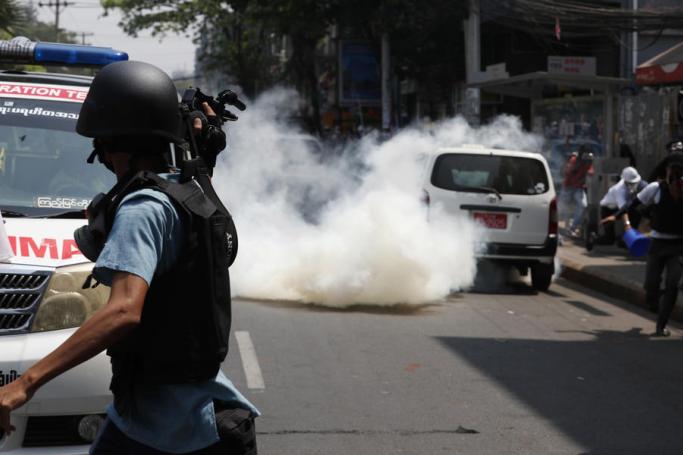The Economist magazine raised a few hackles in the Myanmar independent media community this month with a claim that journalists must be “drinking the Kool-Aid” in their coverage of the bitter conflict since the February 2021 military coup.
The story on 19 May under the title, “Myanmar’s resistance is at risk of believing its own propaganda”, claims the Burmese media is painting an overly optimistic picture of the war. “To spend time on Burmese social media or online news sites is to think the end is near for Myanmar’s military junta,” the Economist writer says.
The magazine raised an important issue, namely assessing the progress of the Myanmar resistance or People’s Defence Forces (PDF) groups against the brutal Myanmar Tatmadaw or military.
The Economist assessment – that claimed the resistance was overplaying the success of the PDFs and suggesting there was light at the end of the tunnel – prompted a detailed response by one independent Burmese media outlet, rightly annoyed by the criticism of the hard work put in by the independent media.
Mizzima prefers not to criticize the work of other media outlets but it is clear that the Economist writer does not have a particularly good grasp of Myanmar and the current crisis. The Economist typically provides important insight into affairs around the world, and some would argue that because the writers’ names are not supplied, it provides the magazine with the opportunity to speak more openly.
However, there have been a number of times over the years where an Economist writer has been able to run rough-shod over an important subject, typically with little comeback.
The core problem with the Economist story assessment of the Myanmar crisis is in lumping the deluge of social media coverage in with what the independent media is reporting. Much of what goes out under the banner of the Spring Revolution in social media – a highly unreliable media - can be considered PR for the fighters and all who are supporting the drive to kick the military out of power. Quite often one sees “Ra-Ra” for the PDFs and exaggerated claims mixed in with all the photos and memes.
While it is not possible to speak for all independent Burmese media covering the crisis, it is clear that a number of these media outlets, operating under difficult circumstances, attempt to take care with their figures and assessments of the conflict between the junta and the resistance forces, including the work by the National Unity Government (NUG) to build an administration and to establish standing in the international community. Since the coup, it has been hard for independent journalists to operate in Myanmar, given the arrests, imprisonment and deaths among their ranks.
What is published in the independent media and what pours out as outlandish claims and memes in social media need to be separated. Many in the independent media have their feet firmly placed on the ground and are under no illusion that the bitter battle between the “Spring Revolution resistance” and the military junta will end soon.
There is a long war ahead and the independent media recognizes the severity of the situation, even if the Economist is suggesting – wrongly – that they are gulping down the Kool-Aid.












